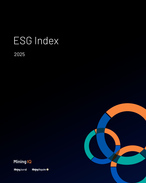This article is 17 years old. Images might not display.
Using steel with appropriate mechanical properties – such as strength, toughness and hardness – for specific jobs, each of which will have its own unique challenges and needs, means lower costs and more effective outcomes.
Various plate standards, domestic and international, specify or provide a range of alternatives for the supply condition of steel plate. This article provides an overview of factors impacting on the various supply conditions of hot rolled steel, as well as implications for the customer when choosing which plate to order.
Detailed are four typical supply conditions: As Rolled, Normalised, Normalised Rolled, and Thermo-mechanical Controlled Rolled.
When discussing plate supply conditions, it helps to have a basic understanding of steel metallurgy as it relates to the plate rolling process. How steel is rolled affects the mechanical properties of the final plate, as shown in figure 1.
When a steel slab is reheated in a reheat furnace (~1200-1250C), the steel forms a structure referred to as austenite. The effect of rolling on austenite and the change from austenite to other structures (such as ferrite and pearlite) during the rolling process significantly affects the properties of the steel.
The slab begins to cool when it exits the furnace and is rolled. In the early stages of rolling the temperature remains high and the deformation of the slab leads to new grains of austenite forming and growing within the existing austenite structure. This occurs by a process known as recrystallisation and grain growth. The deformation occurs as a result of the rolling.
The structure at this stage is one of coarse austenite. When this plate cools to room temperature it results in a microstructure of fairly coarse-grained ferrite and pearlite which gives average strength and toughness. This process is generally known as hot rolling.
If the steel has micro-alloying elements such as niobium, titanium, vanadium or aluminium added there is a point during rolling where the austenite no longer recrystallises but remains in a deformed condition.
This is known as the non-recrystallisation temperature. The micro-alloying elements help retard recrystallisation and grain growth. This leads to a finer grain size and helps improve strength and toughness.
If rolling is carried out below the non-recrystallisation temperature, but usually above the A3 (the temperature where the austenite starts to transform into ferrite), the structure at the end of rolling consists of fine “pancake” shaped grains of deformed austenite. Some rolling may also take place just below the A3 temperature to give optimal strength and toughness.
On cooling to room temperature, the large surface area of the pancaked grains allows for a lot of ferrite nucleation sites and as such gives a fine-grained ferrite/pearlite microstructure which is both strong and tough. This process is known as Thermo-mechanical Controlled Rolling (TMCR).
Some steel manufacturers employ water spray cooling after rolling in a process known as accelerated cooling, alternatively known as Thermo-mechanical Controlled Processing (TMCP) – TMCR and TMCP are terms used interchangeably. This usually results in very fine ferrite/pearlite microstructure giving excellent strength and toughness.
With As Rolled plate there is only a moderate strength requirement and usually no or only moderate toughness requirements for the steel.
There is no stipulation on the “finish” rolling temperature (the temperature at which the final pass in the rolling mill is carried out), but generally the finish rolling temperature of an As Rolled plate will be above the A3 temperature.
An example of As Rolled plate is AS/NZS 3678-250. This sort of plate is often used for general structural applications and hoppers, bins and tanks.
With plate supplied in the Normalised condition, the plate rolling process is similar to As Rolled plate. Following rolling, however, the plate is subjected to an additional heat treatment process: Normalising.
Normalising is usually specified where there is some high temperature-forming process during fabrication. It may also be used where the mechanical properties specified are not achievable by rolling alone.
In Normalising, the plate is heated up to a temperature just above the A3 (approximately 900C for most plate steel grades) and held there for a period of time. During this heating period the ferrite and pearlite structure transforms back into austenite. Because the temperature is held close to the A3, a uniform fine-grained austenite structure develops.
After heating, the plate is cooled in still air. As the plate cools, the fine-grained austenite structure transforms again into a fine-grained ferrite/pearlite mixture. The result is a structure with improved strength and toughness compared to As Rolled.
Examples of grades are AS 1548-7-460NL40 and AS 1548-5-490NL50. Normalised plate is often used in pressure vessels operating at low temperatures and heavy gauge plate requiring good toughness.
The next common supply condition is Thermo-mechanical Controlled Rolling (TMCR). This may also be referred to as Thermo-mechanical Controlled Processing (TMCP) in some standards.
Note the terminology of “Controlled Rolling” to describe the TMCR process is not strictly true, as any process that controls the temperature at which final deformation is carried out is “Controlled Rolled”. Hence, by definition the Normalised Rolled process described below is a Controlled Rolling process.
In the TMCR process the final rolling passes occur at, or just below, the A3 temperature. As a consequence of the lower finish rolling temperatures, the recrystallisation of the austenite structure is inhibited and the subsequent transformation of austenite leads to a fine-grained ferrite and pearlite structure. The fine-grained structure produces plate with good strength and toughness.
However, because rolling is completed at a temperature below the A3 there is some deformation (or cold work) of the ferrite formed as a result of the transformation from the austenite. As a result, if a TMCR steel is heated up to above the A3 (as in hot forming of dished – or dome-like – ends) the cold worked ferrite will transform back into austenite and the plate will lose strength.
Consequently, hot forming of TMCR grades is limited to ~620C to prevent any significant loss of strength or toughness.
One of the advantages to TMCR is...click here to read on.
























